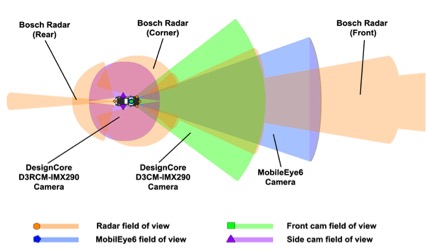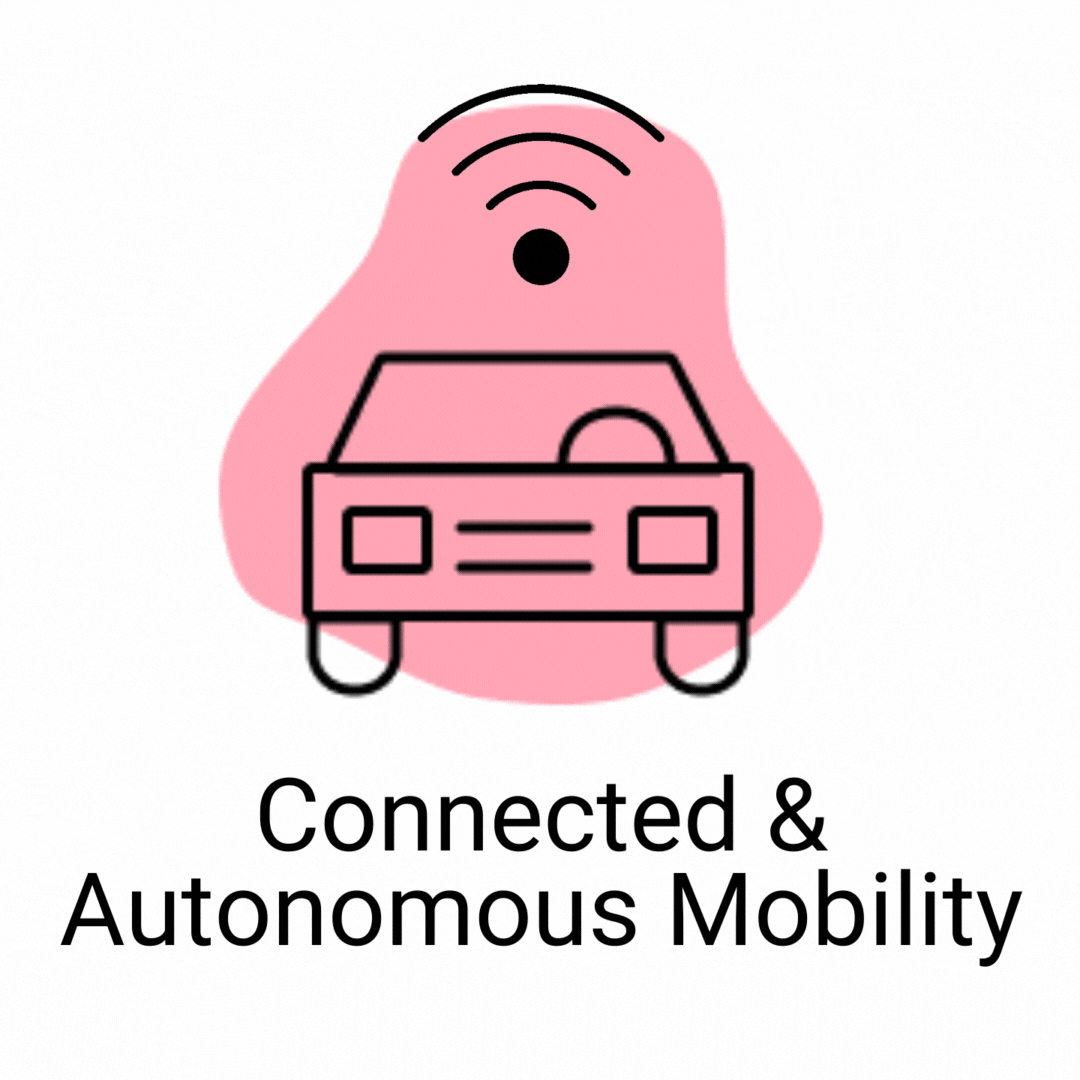Overview
Connected and automated vehicles (CAVs) are believed to have great promise for the future of urban traffic control, and much research has been conducted in the past decade on the possibilities CAVs present for improving traffic flow in cities. However, the primary focus has been on fully automated vehicles and environments with 100% connected and automated vehicles, which is not expected to become reality for a relatively long time. In the near future, urban environments are likely to have low concentrations of CAVs and limited levels of autonomy (LCAVs). Furthermore, field-testing of CAV-based traffic control methods, especially with LCAVs, is lacking. Understanding and field-testing the benefits of traffic control with LCAVs is an imperative question for the near-term.
Prior research undertaken by this team has focused on developing integrative vehicle-traffic control (iVTC) methods in environments with fully automated and connected vehicles. This project aims to extend and field-test CAV-based traffic signal/vehicle control methods developed by the research team in previous projects to understand and quantify the benefits of CAV-based control in the real world.
Research Objectives
This project will extend and redevelop the team’s CAV-based traffic-vehicle control methods developed in earlier projects to accommodate LCAVs and test the methods in real-world settings. The research team plans to field-test and evaluate the benefits of vehicle control with LCAVs both for equipped vehicles and all vehicles in the traffic system. To achieve these objectives, the team is collaborating with the EcoCar3 team at UW, as well as researchers and experts at other partner universities.
Related Media

Sensor field of view diagram for EcoCAR team proposed CAV architecture. Detection ranges are not to scale.
Personnel
Deliverables
Datasets
Details
- Project Title Research and Field Testing of Vehicle-Traffic Control with Limited-Capacity Connected/Automated Vehicles
- Universities University of Washington
- Principal Investigator Xuegang (Jeff) Ban
- PI Contact Information banx@uw.edu
- Co-Principal Investigators Brian Fabien, Yinhai Wang, Don Mackenzie
- Funding Source(s) and Amounts Provided (by each agency or organization) $157,500 (C2SMART: $102,500; Cost Share from UW: $55,000)
- Total Project Cost $157,500
- USDOT Award # 69A3551747124
- Start and End Date 3/1/2019-12/31/2020
- Brief Description of Research Project While connected and automated vehicles (CAVs) have received much attention in transportation especially on how they may transform future urban traffic/vehicle control, it is becoming increasingly clear that in the near future, we will have to deal with a relatively low penetration of CAVs with limited level of autonomy (e.g., Level 2 or Level 3). Thus how to understand and test in real world the benefits of CAVs with limited penetration and autonomy for vehicle-traffic control remains an interesting and imperative question. This research aims to extend and field test the CAV-based traffic signal/vehicle control methods the team has developed in the past (many were supported by C2SMART) to understand and quantify the benefits of CAV-based control in real world. The team will collaborate with UW’s EcoCar3 team to conduct field testing and to involve students from different levels (Ph.D., graduate and undergraduate students) and backgrounds to participate in this multidisciplinary and cutting edge research project.
- Describe Implementation of Research Outcomes (or why not implemented) CAV-based traffic/vehicle control was tested via vehicle-in-the-loop simulation to understand the benefits of CAVs with limited penetration and autonomy.
- Impacts/Benefits of Implementation (actual, not anticipated) Extending field tests of CAV-based traffic signal and vehicle control methods and quantifying the benefits of CAV-based control in the real world will drive greater understanding of the benefits of CAVs with limited penetration and autonomy, the near-term outlook of CAVs.






